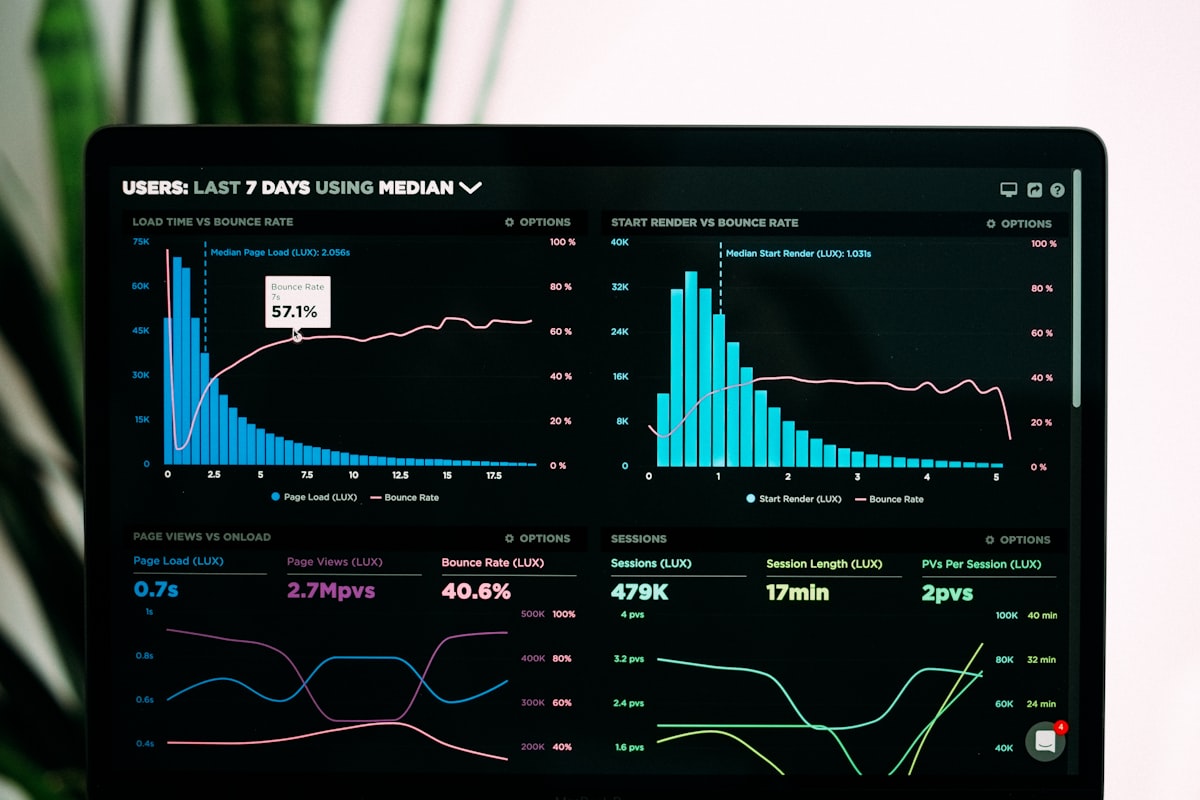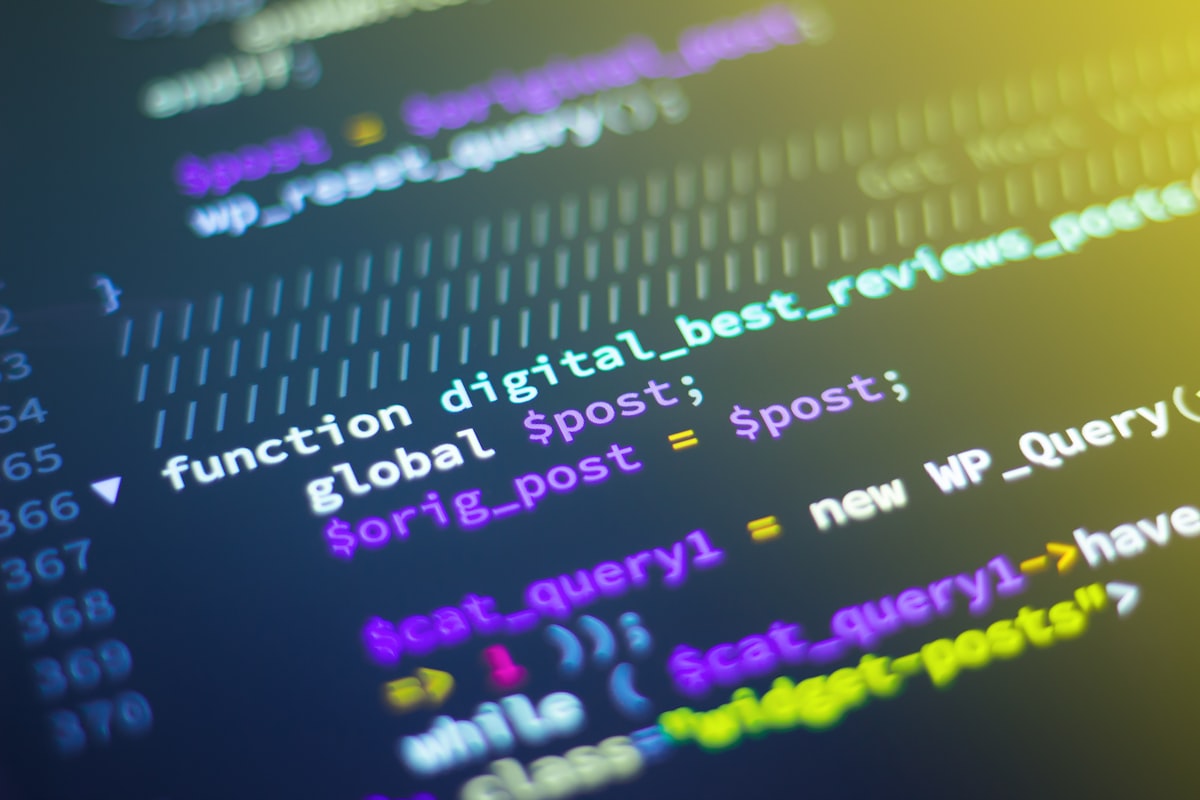How Data Science Is Revolutionizing Modern Marketing

Discover how data science transforms marketing from guesswork to precision. Learn about customer segmentation, predictive analytics, real-time personalization, and the tools that help businesses understand customers like never before.
Remember when marketing decisions were made based on gut feelings and broad demographic assumptions? Those days are quickly becoming history. Today's most successful brands don't just hope their customers will respond positively to campaigns – they know they will, because data science has given them the power to understand, predict, and personalize customer experiences with unprecedented precision. From Netflix recommending your next binge-watch to Amazon suggesting products you didn't even know you needed, data science has fundamentally transformed how businesses connect with their audiences.
The shift from intuition-based to data-driven marketing represents one of the most significant changes in business strategy over the past decade. While traditional marketing relied heavily on creative instincts and broad market research, modern marketing leverages real-time customer data, behavioral patterns, and sophisticated algorithms to make decisions. This evolution hasn't just improved marketing effectiveness – it's created entirely new ways for brands to understand and engage with their customers at every touchpoint of their journey.
What Is Data Science in Marketing?
Data science in marketing is the practice of extracting actionable insights from customer data to optimize marketing strategies, improve customer experiences, and drive business growth. Think of it as having a crystal ball that doesn't just show you what might happen, but actually uses mathematical models and statistical analysis to predict customer behavior with remarkable accuracy.
Core Components of Marketing Data Science
- **Predictive Modeling**: Using historical data to forecast future customer behaviors and campaign outcomes
- **Customer Segmentation**: Grouping customers based on shared characteristics, behaviors, or preferences
- **A/B Testing**: Comparing different versions of campaigns to determine which performs better
- **Attribution Analysis**: Understanding which marketing channels and touchpoints drive conversions
- **Real-time Analytics**: Processing and acting on customer data as interactions happen
- **Sentiment Analysis**: Using natural language processing to understand customer emotions and opinions
- **Churn Prediction**: Identifying customers likely to stop engaging or purchasing
- **Lifetime Value Modeling**: Calculating the long-term value of customer relationships

Modern marketing relies on sophisticated data visualization and analytics platforms to understand customer behavior
Customer Segmentation and Personalization: Understanding Your Audience
Gone are the days when marketers could treat all customers the same way. Customer segmentation powered by data science allows businesses to divide their audience into distinct groups based on demographics, behavior patterns, purchase history, and engagement levels. This isn't just about basic age and location data anymore – modern segmentation can identify micro-segments based on subtle behavioral patterns that humans might never notice.
Types of Customer Segmentation
- **Demographic Segmentation**: Age, gender, income, education, and family status
- **Geographic Segmentation**: Location-based grouping from countries to neighborhoods
- **Psychographic Segmentation**: Lifestyle, values, interests, and personality traits
- **Behavioral Segmentation**: Purchase patterns, brand loyalty, and product usage
- **Firmographic Segmentation**: For B2B marketing – company size, industry, revenue
- **Technographic Segmentation**: Technology usage and digital behavior patterns
The power of data-driven segmentation becomes apparent when you consider that personalized emails deliver 6x higher transaction rates, and companies using advanced personalization see revenue increases of 6-10%. By understanding exactly what different customer groups want and need, businesses can create laser-focused campaigns that feel personally relevant to each recipient.
| Segmentation Type | Data Sources | Marketing Application | Example Insight |
|---|---|---|---|
| Demographic | Surveys, Purchase Records, Social Media | Targeted Product Messaging | Women 25-35 prefer eco-friendly products |
| Behavioral | Website Analytics, Purchase History | Personalized Recommendations | Frequent buyers respond to loyalty programs |
| Geographic | IP Address, Store Locations, Shipping Data | Location-Based Offers | Urban customers prefer online shopping |
| Psychographic | Social Media, Surveys, Reviews | Brand Positioning | Health-conscious segment values transparency |
| Firmographic | Company Databases, LinkedIn, Industry Reports | B2B Account Targeting | SMBs need cost-effective solutions |
| Technographic | App Usage, Device Data, Digital Behavior | Channel Optimization | Mobile-first users prefer app notifications |
Predictive Analytics: Forecasting Consumer Behavior
Imagine being able to predict which customers are most likely to make a purchase next month, or knowing exactly when a loyal customer might be considering switching to a competitor. Predictive analytics makes this possible by analyzing patterns in historical data to forecast future behaviors. It's like having a marketing time machine that helps businesses stay one step ahead of customer needs and market trends.
Key Applications of Predictive Analytics in Marketing
- **Churn Prediction**: Identifying customers at risk of leaving before they actually do
- **Lead Scoring**: Ranking potential customers by their likelihood to convert
- **Demand Forecasting**: Predicting product demand for inventory and campaign planning
- **Price Optimization**: Finding the optimal price points for maximum revenue
- **Campaign Performance**: Estimating the success of marketing campaigns before launch
- **Cross-sell/Upsell Opportunities**: Identifying the best products to recommend to existing customers
- **Seasonal Trend Analysis**: Anticipating seasonal changes in customer behavior
- **Customer Lifetime Value**: Predicting the total value a customer will bring over time

Predictive analytics dashboards help marketers forecast customer behavior and campaign performance
Real-Time Marketing and Recommendation Engines
The magic happens when data science enables real-time decision making. Every time you see "People who bought this also bought..." on Amazon, or when Spotify creates a Discover Weekly playlist perfectly suited to your taste, you're experiencing the power of real-time recommendation engines. These systems process millions of data points in milliseconds to deliver personalized experiences that feel almost telepathic.
How Recommendation Engines Work
- **Collaborative Filtering**: "People like you also enjoyed..." - based on similar user behavior
- **Content-Based Filtering**: Recommending items similar to what you've already engaged with
- **Hybrid Systems**: Combining multiple approaches for more accurate recommendations
- **Deep Learning Models**: Using neural networks to understand complex patterns in user preferences
- **Context-Aware Systems**: Considering time, location, device, and situation for recommendations
- **Multi-Armed Bandit**: Balancing exploration of new options with exploitation of known preferences
The impact of real-time personalization is staggering. Netflix estimates that their recommendation system saves them $1 billion per year by reducing customer churn. Amazon attributes 35% of their revenue to their recommendation engine. These aren't just nice-to-have features – they're fundamental business drivers that keep customers engaged and increase lifetime value.

Modern apps use sophisticated algorithms to deliver personalized content and product recommendations in real-time
Optimizing Campaigns with A/B Testing and Attribution Models
A/B testing is like conducting controlled experiments with your marketing campaigns. Instead of guessing which email subject line will get better open rates, you can test two versions with different audience segments and let the data tell you which performs better. Modern A/B testing goes far beyond simple split tests – it includes multivariate testing, sequential testing, and sophisticated statistical analysis to ensure results are both significant and actionable.
A/B Testing Best Practices for Marketers
- **Test One Variable at a Time**: Isolate changes to understand what drives results
- **Ensure Statistical Significance**: Run tests long enough to get reliable results
- **Define Success Metrics**: Know exactly what you're trying to improve before testing
- **Segment Your Results**: Different audience segments may respond differently
- **Document Everything**: Keep detailed records of tests and learnings
- **Test Continuously**: Make A/B testing a regular part of your marketing process
- **Consider External Factors**: Account for seasonality, events, and other influences
| Test Element | Version A | Version B | Improvement | Statistical Significance |
|---|---|---|---|---|
| Subject Line | Save 20% Today! | Limited Time: 20% Off | +12% Open Rate | 95% Confident |
| Call-to-Action | Shop Now | Get My Discount | +8% Click Rate | 98% Confident |
| Email Layout | Text-Heavy | Image-Focused | +15% Engagement | 99% Confident |
| Send Time | 9 AM Tuesday | 2 PM Thursday | +22% Open Rate | 97% Confident |
| Personalization | Hi Customer | Hi [First Name] | +18% Click Rate | 96% Confident |
| Social Proof | No Testimonials | Customer Reviews | +25% Conversion | 99% Confident |
Understanding Attribution Models
Attribution modeling helps marketers understand the customer journey by assigning credit to different touchpoints that lead to conversions. In today's multi-channel world, customers might see a Facebook ad, visit your website, read email newsletters, and finally make a purchase after clicking a Google ad. Attribution models help you understand which channels deserve credit for that sale, enabling smarter budget allocation and strategy decisions.
Key Tools and Technologies Used in Marketing Data Science
The modern marketing data scientist has access to an impressive toolkit that ranges from programming languages and statistical software to specialized marketing platforms and visualization tools. Success in marketing data science often depends on choosing the right combination of tools for your specific needs and organizational context.
Programming Languages and Statistical Tools
- **Python**: The most popular language for data science, with libraries like pandas, scikit-learn, and matplotlib
- **R**: Specialized for statistical analysis and data visualization
- **SQL**: Essential for database queries and data extraction
- **JavaScript**: For web analytics and front-end data visualization
- **SAS**: Enterprise statistical software widely used in large organizations
- **SPSS**: User-friendly statistical software for non-programmers
Marketing Analytics and Automation Platforms
| Tool Category | Popular Tools | Primary Use Case | Best For |
|---|---|---|---|
| Web Analytics | Google Analytics, Adobe Analytics, Mixpanel | Website behavior tracking | Understanding user journeys |
| Data Visualization | Tableau, Power BI, Looker, D3.js | Creating dashboards and reports | Executive reporting and insights |
| Customer Data Platforms | Segment, Salesforce CDP, Adobe CDP | Unifying customer data | 360-degree customer view |
| A/B Testing | Optimizely, VWO, Google Optimize | Campaign experimentation | Conversion optimization |
| Email Marketing | Mailchimp, HubSpot, Klaviyo | Email automation and analysis | Personalized email campaigns |
| Social Media Analytics | Hootsuite, Sprout Social, Buffer | Social performance tracking | Social media ROI measurement |
| CRM Platforms | Salesforce, HubSpot, Pipedrive | Customer relationship management | Sales and marketing alignment |
| Marketing Automation | Marketo, Pardot, ActiveCampaign | Multi-channel campaign management | Lead nurturing workflows |

A typical marketing data science technology stack includes analytics, visualization, and automation tools
Real-World Examples and Case Studies
The best way to understand the impact of data science in marketing is through real-world success stories. From global streaming giants to beverage companies, businesses across industries are using data science to create more effective, personalized, and profitable marketing strategies. These case studies demonstrate the tangible benefits of investing in marketing data science capabilities.
Spotify: Personalization at Scale
Spotify's approach to data science has revolutionized music discovery and engagement. Their algorithms analyze over 30 billion data points daily, including listening history, skip rates, playlist additions, and even the time of day when users listen to different genres. This data powers features like Discover Weekly, which delivers a personalized playlist to each of their 400+ million users every Monday. The result? Over 40% of Discover Weekly tracks get saved to users' personal libraries, demonstrating the accuracy of their recommendation engine.
Coca-Cola: AI-Powered Sentiment Analysis
Coca-Cola uses AI and machine learning to analyze social media conversations, customer feedback, and market trends in real-time. Their system processes over 120,000 pieces of content daily across multiple platforms and languages. This sentiment analysis helps them understand brand perception, identify emerging trends, and respond quickly to both positive and negative customer experiences. During product launches, they can adjust messaging and targeting based on real-time sentiment data, resulting in more successful campaigns and better customer relationships.
More Marketing Data Science Success Stories
- **Netflix**: Uses viewing data to not only recommend content but also to decide which original shows to produce, resulting in hits like House of Cards and Stranger Things
- **Amazon**: Their recommendation engine drives 35% of total revenue and has been continuously refined using machine learning for over two decades
- **Starbucks**: Uses predictive analytics and location data to optimize store locations and personalize mobile app offers, increasing customer visit frequency by 15%
- **Airbnb**: Employs machine learning for dynamic pricing, fraud detection, and matching guests with ideal accommodations, improving both host earnings and guest satisfaction
- **Uber**: Uses real-time data analysis for surge pricing, route optimization, and demand forecasting, ensuring efficient service delivery
- **LinkedIn**: Leverages data science for content personalization, job recommendations, and professional networking suggestions, keeping users engaged on the platform

Companies leveraging marketing data science see significant improvements in customer engagement and revenue growth
Learn Data Science for Marketing: Courses and Resources
Ready to dive into the world of marketing data science? Whether you're a marketer looking to add analytical skills or a data scientist interested in marketing applications, there are excellent learning resources available. The key is to combine technical skills with marketing knowledge and practical, hands-on experience with real datasets.
Recommended Learning Path
- **Foundation**: Start with basic statistics, probability, and marketing fundamentals
- **Technical Skills**: Learn Python or R, SQL, and data visualization tools
- **Marketing Analytics**: Understand web analytics, customer journey mapping, and attribution
- **Advanced Techniques**: Explore machine learning, predictive modeling, and A/B testing
- **Practical Application**: Work on real marketing datasets and case studies
- **Specialization**: Focus on specific areas like customer segmentation or recommendation systems
Top Learning Resources for Marketing Data Science
Google Analytics Academy
Free courses covering web analytics fundamentals and advanced techniques
HubSpot Academy Marketing Analytics
Comprehensive marketing analytics certification with practical applications
Coursera Digital Marketing Specialization
University-level courses covering digital marketing and analytics
Google Digital Marketing Courses
Free digital marketing courses including data and analytics modules
edX Marketing Analytics Programs
Professional education programs from top universities
Tableau Public Training
Free data visualization training and marketing dashboard examples
Practical Tips for Learning Marketing Data Science
- **Start with Real Data**: Use your own website or business data for practice projects
- **Join Communities**: Participate in marketing analytics forums and data science groups
- **Build a Portfolio**: Create case studies showcasing your marketing data science projects
- **Stay Current**: Follow marketing technology blogs and attend webinars
- **Practice Storytelling**: Learn to communicate insights effectively to non-technical stakeholders
- **Experiment Continuously**: Set up A/B tests and analyze results regularly
- **Network with Professionals**: Connect with marketing data scientists in your industry
Conclusion: The Power of Data in Understanding Customers
The revolution of data science in marketing isn't just changing how businesses promote their products – it's fundamentally transforming how they understand and serve their customers. We've moved from a world of mass marketing and educated guesses to one of precision targeting and data-driven decision making. This shift has democratized effective marketing, allowing businesses of all sizes to compete by understanding their customers better than ever before.
From customer segmentation that reveals hidden patterns to predictive analytics that anticipates future behaviors, from real-time personalization that delights customers to A/B testing that optimizes every interaction – data science has given marketers superpowers. The companies that master these capabilities aren't just running more effective campaigns; they're building stronger, more profitable relationships with their customers.
As artificial intelligence and machine learning continue to advance, the possibilities for marketing data science will only expand. We're already seeing the emergence of AI-powered creative optimization, voice and visual search analytics, and cross-platform attribution models that track customers across an increasingly complex digital landscape. The future belongs to marketers who can harness these technologies while maintaining the human touch that builds genuine connections.
Ready to transform your marketing with data science? Start your journey today by exploring our comprehensive collection of data science and marketing analytics courses. Whether you're just beginning or looking to advance your skills, the tools and knowledge you need are within reach. The future of marketing is data-driven – and it starts with your next learning step.
Tags:
Related Posts
Comments
Leave a Comment
No comments yet
Be the first to share your thoughts!



